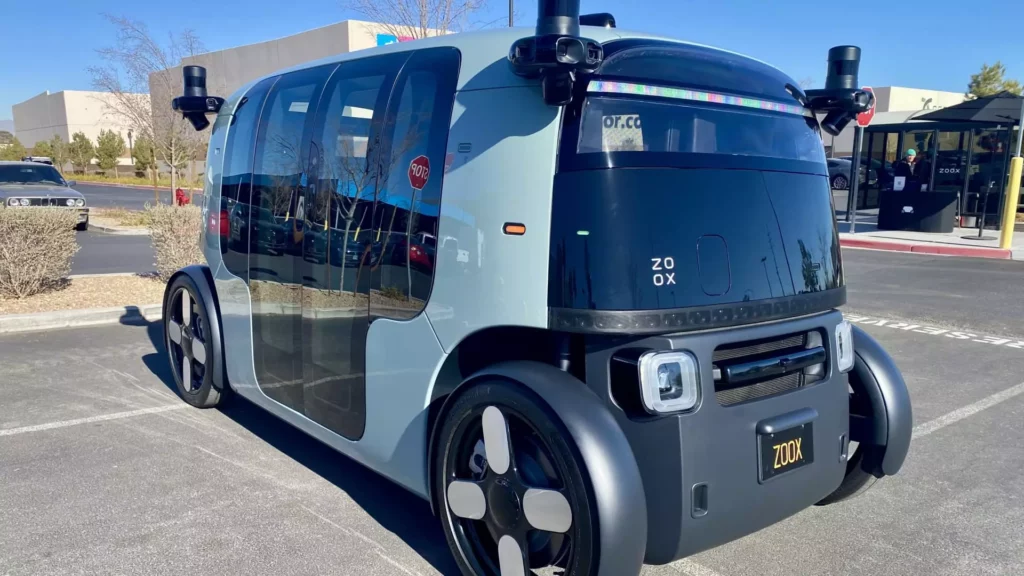As the autonomous vehicle landscape continues to evolve, 2023 marks a pivotal year for Amazon’s autonomous vehicle unit, Zoox. The company, which has been gaining traction since its founding a decade ago and subsequent acquisition by Amazon for $1.3 billion in 2020, is poised to expand its operations and delve into the commercialization of its unique robotaxi service. With ambitious plans to offer rides to the public imminently, Zoox aims to not only increase its operational footprint but also significantly enhance its fleet of self-driving vehicles, going beyond the limited number of prototypes currently in use.
Co-founder and Chief Technology Officer Jesse Levinson articulated the excitement surrounding the company’s progress during a recent demonstration ride in Las Vegas. “That’s a lot of work, but we’re excited for that,” he stated, indicating optimism for the journey ahead despite a backdrop of diminishing interest from certain investors and the disbandment of autonomous units among traditional automotive giants. Notably, while companies like General Motors and Ford have faced setbacks, Zoox’s commitment to continuing its vision appears steadfast.
What sets Zoox apart from its competitors, such as Waymo, is its purpose-built robotaxi design that completely eliminates the need for human drivers. Unlike Waymo, which retrofits traditional cars for autonomous operation, Zoox has crafted its vehicles from the ground up with a passenger-centric approach. The aesthetics, often critiqued for resembling “boxes” or “toasters,” feature an interior that prioritizes passenger comfort, with seats facing one another, thereby promoting a more social ride experience.
As testing progresses in key cities like Las Vegas, San Francisco, and Foster City, California, Zoox is targeting Las Vegas to be its first operational market. The company is preparing to launch an “Early Rider Program” within the next few months, eventually aiming for a broader public rollout. Expansion into cities such as Miami and Austin is also on the horizon, though specific timelines remain hazy.
Driving a Zoox robotaxi around the bustling Las Vegas Strip provides a glimpse into the vehicle’s operational capabilities and technical endurance. During a recent test, the robotaxi demonstrated a commendable ability to navigate urban environments assertively, although there were moments of hesitation that raised questions about its decision-making processes. For instance, opting to remain in a lengthy line of vehicles rather than intelligently navigating obstacles showcased the challenges that self-driving technology still faces.
Levinson has emphasized the importance of balancing precaution with assertiveness. Autonomous vehicles must adhere strictly to traffic laws while also exhibiting an understanding of human driving behavior to ensure safe interactions on the road. This intricate balancing act is crucial for Zoox’s strategy to achieve successful commercialization.
The journey toward full commercialization of autonomous vehicles has proven to be fraught with difficulties. While Zoox envisions a future where its robotaxis become a preferred mode of transport, the path forward is riddled with uncertainties. The industry has seen significant players like GM’s Cruise stumble post-accident controversies, forcing many to reevaluate their strategies and operational readiness.
Zoox’s competitiveness in this rapidly evolving market is contingent on effectively navigating these challenges. According to industry expert Sam Abuelsamid, while the technological advancements at Zoox are promising, the core of the challenge lies in establishing a viable business model. The transition from conceptual success to a sustainable business operation is fraught with risks, particularly in covering costs associated with development, operation, and regulatory compliance.
With the architecture of self-driving capabilities evolving, Zoox stands to emerge as a significant player in the market, albeit behind established entities like Waymo. Levinson’s cautious optimism regarding the company’s growth illustrates a deep understanding of the difficulty in transforming technological progress into a operationally successful model. As Zoox prepares to offer rides and expand its services, observing how it tackles these operational hurdles will be crucial.
Thus, while 2023 is shaping up to be a year of major developments for Zoox, the company must continuously adapt to the complexities of public acceptance, regulatory frameworks, and competitive dynamics. The ultimate test will lie in demonstrating that their vision, backed by innovative vehicle design and operational proficiency, can create a sustainable model within the diverse tapestry of the autonomous vehicle ecosystem. Whether Zoox can rise to this challenge remains to be seen, but the eyes of the industry will certainly be watching closely.

